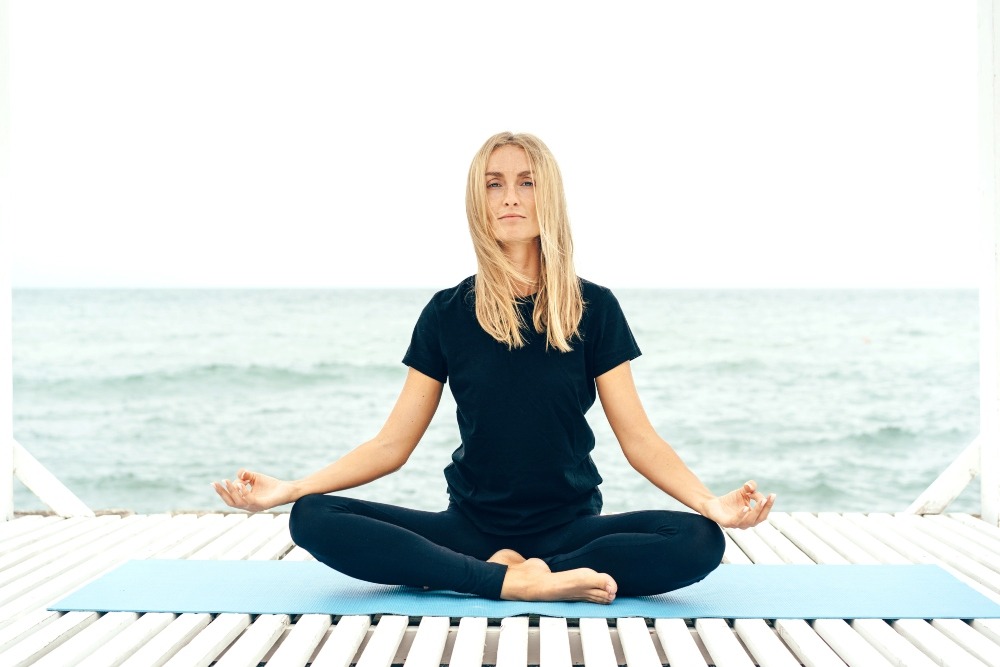The Guided Morning Meditation for Beginners for a Better Morning and Life
We are sure you’ve heard or researched about the advantages of doing a meditation regimen, but you may either be a little nervous to start since you find the entire idea of meditation too overwhelming. Or, you believe you need to have a lot of time to start practicing.
Or maybe you did it a couple of times, but it felt challenging because you felt like your head filled with emotions, and you could have felt overwhelmed, and you actually said you weren’t good at it.

In this post, we will discuss basic ideas about the true meaning of meditation, the advantages of integrating this spiritual activity into your life, and easy tips to adopt.
Therefore, you can eliminate hurdles to your everyday practice and understand basic practice exercises that can make a massive difference in your life, a positive change.

WATCH THIS LIFE CHANGING VIDEO
10 Morning Habits of Billionaires
Find out the morning secrets of millionaires and billionaires. It’s all about mastering your morning.
Your Body and Mind on Morning Meditation - Why Practice Meditation
Meditation is a wonderful way to achieve a healthier equilibrium of dialog within your mind and your body. It’s an easier method that you can follow anytime and at any time to relieve tension. Just as a fitness exercise, the more you do, the more rewards you encounter, and the longer they last – both in body and mind.
Research by the American Psychological Association found that 40 percent of the people they surveyed reported overeating or consuming unhealthy foods as a way to cope with stress, and 46 percent reported staying awake at night due to elevated levels of stress.
And here is the thing: you can work on eating right, practicing more regularly having more sleep, using more natural products on your skin and at home; however, if you don’t take control of your mind, you’ll probably feel underpowered throughout your life.
The Priceless Benefits of Meditation
Meditation helps to relieve tension, but the real advantage is that you will experience harmony inside the peace that spiritual teachings are talking about that crosses all comprehension. One of the greatest aims of meditation is to check in with yourself and communicate with your heart and get in touch with the energies of “wholeness.”
Meditation is a way to tap into the vacuum between your thoughts. You have a thought here thought there, so there is little space between any thought that is termed stillness—this space is the doorway to the eternal mind and the meaning of the spiritual link.
The Guided Morning Meditation
If you’ve never meditated before or if you’ve not meditated for a long time, we suggest that you start with 5-10 minutes. Through practice, you will be able to sit for longer periods.
You can set an intention before you start the process, but start your practice without attaching to some specific result or how your guided meditation “should be. Just be open to discover what you’re supposed to get from each session.
The perfect time to meditate is early in the morning (before your coffee or tea) so that you can continue the day peacefully. Follow these basic steps to launch your meditation practice:
01. Decide on a place that will be your sacred, long-term space for meditation
Try to find a room that’s away from a lot of noise or disturbances, and make it relaxing. You may incorporate soothing background music, light candles and/or incense, or spread a calming essential oil.
Try to find a room that’s away from a lot of noise or disturbances, and make it relaxing. You may incorporate soothing background music, light candles and/or incense, or spread a calming essential oil.
02. Decide on the Best Time
Make meditation a necessity, schedule an appointment for yourself and practice at the very same time every day, and just see it as nurturing your soul. Some people also tend to meditate just before they go to bed; this is going to make you sleep more soundly.
Make meditation a necessity, schedule an appointment for yourself and practice at the very same time every day, and just see it as nurturing your soul. Some people also tend to meditate just before they go to bed; this is going to make you sleep more soundly.
03. Wear comfortable clothes
04. Sit in a comfortable position that you can hold for a few minutes
You would sit on a mattress on the floor, on a sofa, or a chair. Remember to get a backrest so that you can hold your back straight. At the start, you don’t really need to try those sophisticated yogi postures. Don’t lie down, then you’re more likely to fall asleep. Only sit back and straight.
You would sit on a mattress on the floor, on a sofa, or a chair. Remember to get a backrest so that you can hold your back straight. At the start, you don’t really need to try those sophisticated yogi postures. Don’t lie down, then you’re more likely to fall asleep. Only sit back and straight.
05. Set a timer
06. Always begin your guided meditation with 5 to 7 long and slow deep breaths so that you can begin releasing tension
07. Then, just begin to focus your mind on the object. It may be the flame of a candle, the breathing, or a chant-like “I am.”
08. Just remember that you’re going to have thoughts, that you would feel sensations in your body, and that you sometimes hear sounds in your surroundings. It’s all just natural. Whenever you’re mindful of it, either go back to the object you’ve been focused on or go back to paying attention to your breathing instead, or to say the mantra, but do so mentally without moving your lips and tongue.
Basic Morning Meditation Techniques
01. Mindfulness meditation
Mindfulness is about knowing what’s going on in this moment, including what’s arising and passing. This involves emotions, feelings, and sounds, in the body, and everything else that is there. The idea is to observe without judgment and to stay open and conscious.


02. Breathing meditation
You can use this method on your own as a meditation to relax your mind and eliminate distractions. Simply concentrate your attention on breathing, inhaling, and exhaling.
03. Mantra meditation
Repeating phrases or words will help you achieve calm and focus.


04. Walking meditation
A 10-minute walking meditation requiring 1-minute paying close attention to each of your body’s feelings when walking, the feel of your breath, the sensation of air or wind against your skin, whatever you can hear, and what you can see.
05. Candle staring
This is perfect if you find it hard to focus on. Just light a candle and have a look at it. Your focus is going to be kept. If your subconscious has thoughts just thank them and go back and stare at the candle flame.

Clearing the Obstacles to Morning Meditation
The most common barriers to meditation are those that we build ourselves, even though sometimes we are not conscious of them. Here are some of the most common ways we tend to resist beginning a new guided meditation routine and what to do about it:
1) “My Mind Never Stops”: It’s natural to feel dissatisfaction when learning to meditate. Changing your expectations will help you conquer this challenge. Always an emphasis on gradual incremental improvement. A great accomplishment is progressively understanding the subconscious and discovering how to change negative thinking.
2) “I Don’t Have Time”: There’s a myth that you ought to sit down and meditate for at least 30 minutes to an hour. You can launch your everyday practice by spending anywhere between 5 minutes to an hour. You can set your own rules! All you need to do is commit to launching.
Start small, and if you perform more regularly, we can assure you that you’re going to start adding more time to your practicing.
Start small, and if you perform more regularly, we can assure you that you’re going to start adding more time to your practicing.
3) “I Can’t Sit Still”: Do meditation in your own way. A few people don’t like sitting because they prefer walking meditations.
Dr. Kelly McGonigal recommends a 10-minute walking meditation that includes paying attention to any one of your body’s feelings while walking, the feel of your breath, the sensation of air or wind against your skin, what you can see, and what you can hear.
Dr. Kelly McGonigal recommends a 10-minute walking meditation that includes paying attention to any one of your body’s feelings while walking, the feel of your breath, the sensation of air or wind against your skin, what you can see, and what you can hear.

WATCH THIS LIFE CHANGING VIDEO
10 Morning Habits of Billionaires
Find out the morning secrets of millionaires and billionaires. It’s all about mastering your morning.
Summary
Even if you feel like you haven’t accomplished a lot on your practice on a certain day, be consistent. Honor and appreciate that you have taken the time to practice. And if you believe that the results are not obvious, be thankful for your practice, and you’ll be happier as you began!
